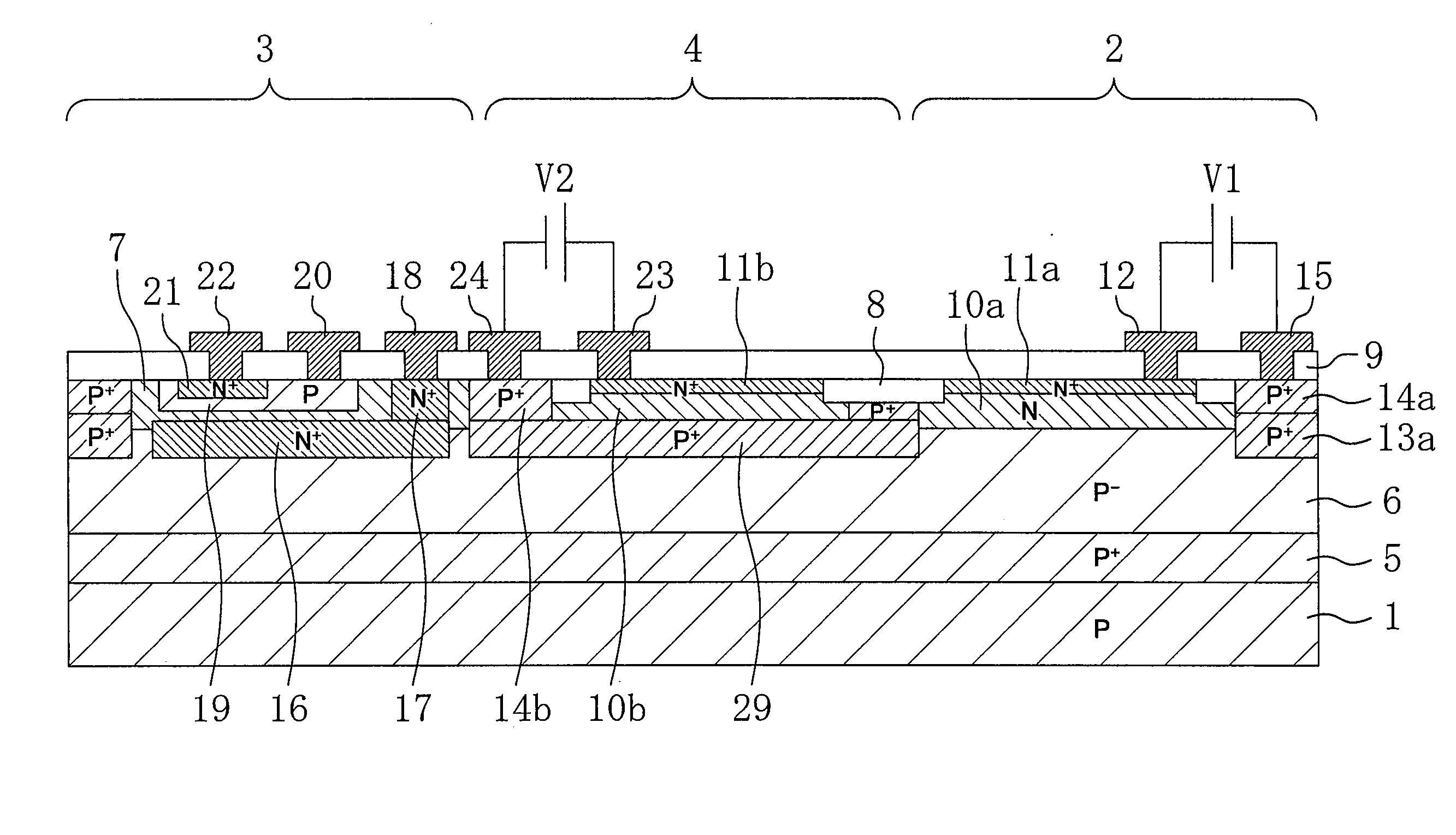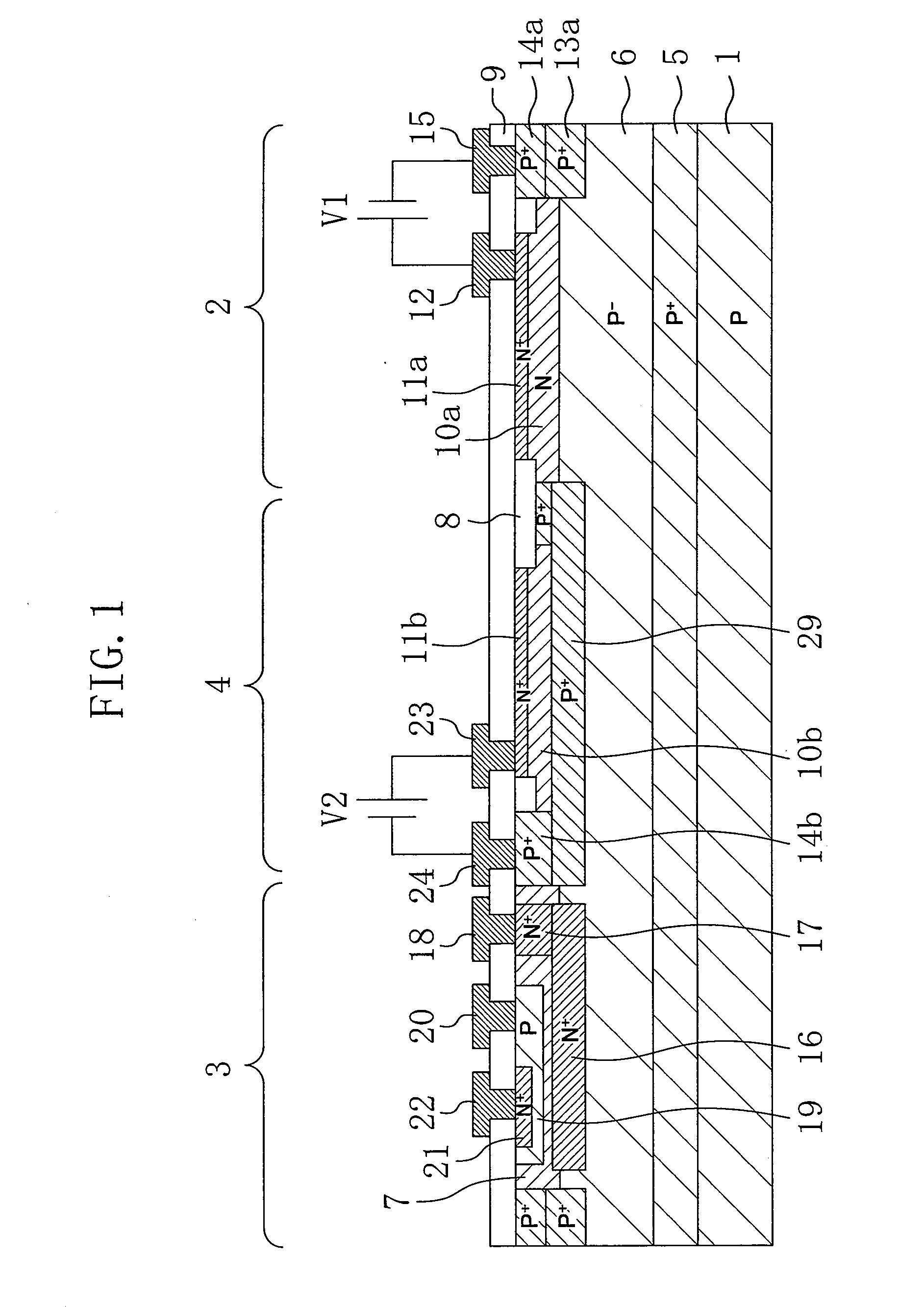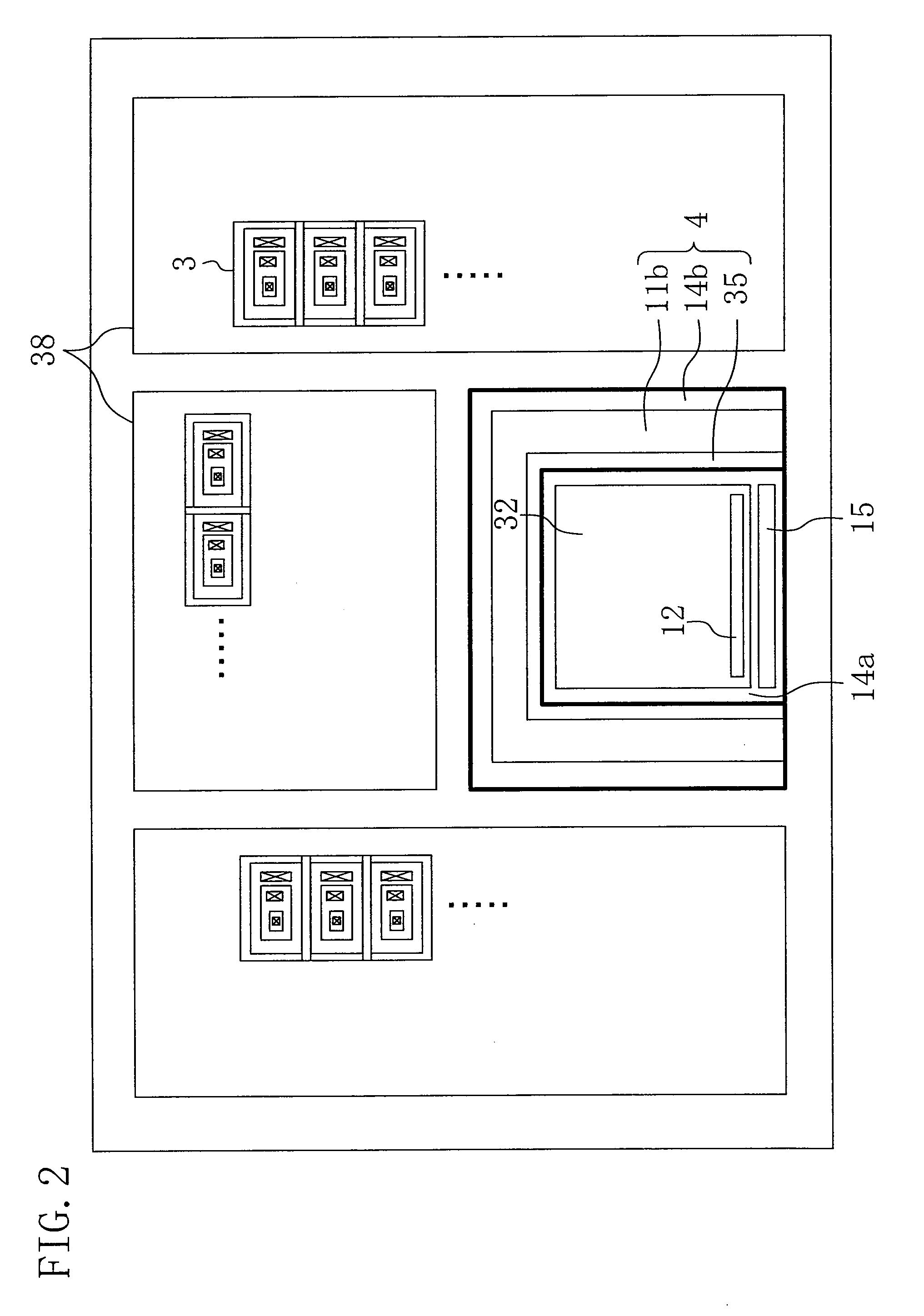Optical semiconductor device
a semiconductor device and optical disc technology, applied in semiconductor devices, diodes, radiation controlled devices, etc., can solve the problems of reduced light receiving sensitivity, increased poor isolation (separation) characteristics between these elements, etc., to increase light receiving sensitivity, reduce leakage current and noise components, and enhance the operating speed of light receiving elements
- Summary
- Abstract
- Description
- Claims
- Application Information
AI Technical Summary
Benefits of technology
Problems solved by technology
Method used
Image
Examples
first embodiment
[0034]An optical semiconductor device, which is an OEIC, according to a first embodiment of the present invention will be described below with reference to the accompanying drawings.
[0035]FIG. 1 is a cross-sectional view schematically illustrating the structure of the optical semiconductor device according to the first embodiment. In FIG. 1, the optical semiconductor device in which a pin photodiode as a light receiving element and an NPN transistor as a bipolar transistor (a semiconductor element) are formed on a p-type silicon substrate is illustrated as an example.
[0036]As shown in FIG. 1, the optical semiconductor device according to this embodiment includes: a semiconductor substrate 1 made of silicon, etc. containing a low concentration of a p-type impurity; an NPN transistor 3 formed on the semiconductor substrate 1; a photodiode 2 formed on the semiconductor substrate 1; and a light absorbing element 4 formed in a region on the semiconductor substrate 1 between the NPN trans...
second embodiment
[0057]An optical semiconductor device according to a second embodiment of the present invention will be described below with reference to the accompanying drawings.
[0058]FIG. 5 is a cross-sectional view schematically illustrating the structure of the optical semiconductor device according to the second embodiment. As shown in FIG. 5, the optical semiconductor device of this embodiment is obtained by forming a surface absorption layer 30 on the cathode contact layer 11b in the optical semiconductor device of the first embodiment. In respects other than the surface absorption layer 30, the optical semiconductor device of this embodiment has the same structure as that of the first embodiment.
[0059]The surface absorption layer 30 may be made of a material that can absorb incident light, and it is particularly preferable that the surface absorption layer 30 be made of a material, such as polysilicon or amorphous silicon, for example, that has a larger absorption coefficient for visible l...
third embodiment
[0060]An optical semiconductor device according to a third embodiment of the present invention will be described below with reference to the accompanying drawings.
[0061]FIG. 6 is a cross-sectional view schematically illustrating the structure of the optical semiconductor device according to the third embodiment. As shown in FIG. 6, the optical semiconductor device of this embodiment is characterized in that an anode buried layer 13b formed on a p-type epitaxial layer 6 and containing a high concentration of a p-type impurity, an anode contact layer 14c formed on the anode buried layer 13b and containing a high concentration of a p-type impurity, and a third anode electrode 31 formed on the anode contact layer 14c are provided in a region in a photodiode 2 located in the vicinity of a light absorbing element 4. In the other respects, the optical semiconductor device of this embodiment has the same structure as the optical semiconductor device of the first embodiment. FIG. 3 is a plan...
PUM
 Login to View More
Login to View More Abstract
Description
Claims
Application Information
 Login to View More
Login to View More - R&D
- Intellectual Property
- Life Sciences
- Materials
- Tech Scout
- Unparalleled Data Quality
- Higher Quality Content
- 60% Fewer Hallucinations
Browse by: Latest US Patents, China's latest patents, Technical Efficacy Thesaurus, Application Domain, Technology Topic, Popular Technical Reports.
© 2025 PatSnap. All rights reserved.Legal|Privacy policy|Modern Slavery Act Transparency Statement|Sitemap|About US| Contact US: help@patsnap.com



